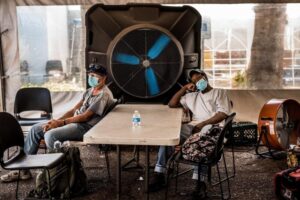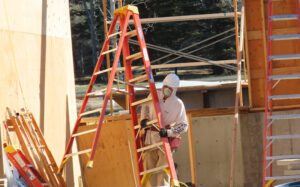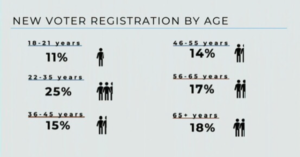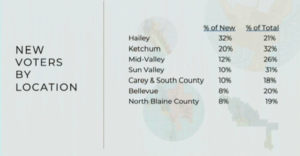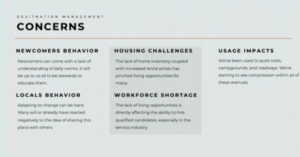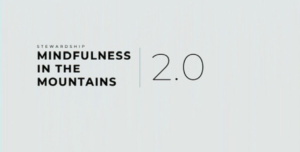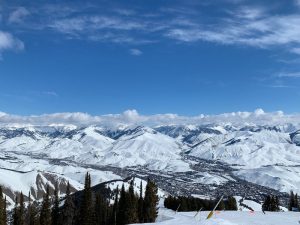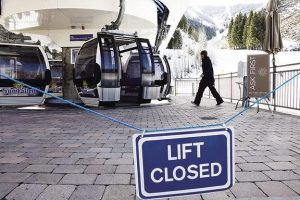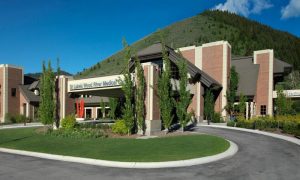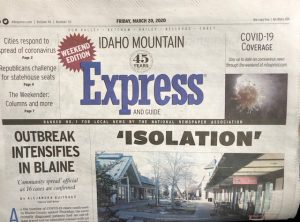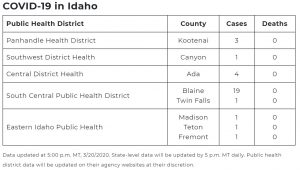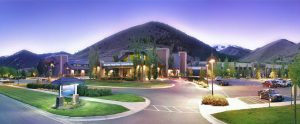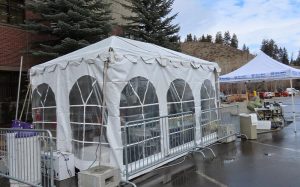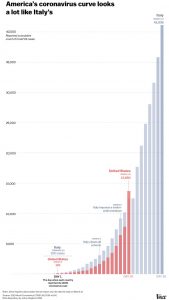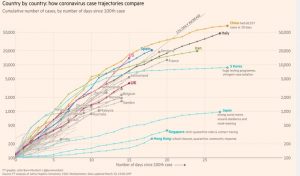Idaho Mountain Express
Are we paying attention?
May 18, 2021ProPublica updated this report from September, 2020. I missed it the first time published, and now already seeing population shifts in the Mountain West, specifically, the Wood River Valley in South-Central Idaho. -dayle
This article, the second in a series on global migration caused by climate change, is a result of a partnership between ProPublica and The New York Times Magazine, with support from the Pulitzer Center.
Senior citizens at a cooling center in Phoenix [summer 2020] during Arizona’s record-setting heat wave. (Meridith Kohut for The New York Times)
Climate Change Will Force a New American Migration
“Wildfires rage in the West. Hurricanes batter the East. Droughts and floods wreak damage throughout the nation. Life has become increasingly untenable in the hardest-hit areas, but if the people there move, where will everyone go?
The millions of people moving north will mostly head to the cities of the Northeast and Northwest, which will see their populations grow by roughly 10%, according to one model. Once-chilly places like Minnesota and Michigan and Vermont will become more temperate, verdant and inviting. Vast regions will prosper; just as Hsiang’s research forecast that Southern counties could see a tenth of their economy dry up, he projects that others as far as North Dakota and Minnesota will enjoy a corresponding expansion. Cities like Detroit; Rochester, New York; Buffalo and Milwaukee will see a renaissance, with their excess capacity in infrastructure, water supplies and highways once again put to good use. One day, it’s possible that a high-speed rail line could race across the Dakotas, through Idaho’s up-and-coming wine country and the country’s new breadbasket along the Canadian border, to the megalopolis of Seattle, which by then has nearly merged with Vancouver to its north.”
Sun Valley’s Population Explodes During Pandemic Year
Eye on Sun Valley
|
https://eyeonsunvalley.com/Mobile/Mobile_Story_Reader?StoryId=8355
Idaho Mountain Express
by Greg Foley
Sun Valley tourism is rebounding, marketing group says
Report: Some 1,500 people have moved to valley during pandemic
The Sun Valley area is undergoing an unexpected surge in growth amid the COVID-19 pandemic, changing life for locals and—to some degree—how Idaho’s premier tourist destination is marketed to potential visitors.
That was the overarching message of a semi-annual meeting conducted by the Visit Sun Valley marketing and business organization livestreamed to viewers Wednesday from The Community Library in Ketchum.
Many people coming to the area are “COVID evacuees,” remote workers, adventurers and people who own second—or third—homes in the area, he said. Amid the pandemic, Visit Sun Valley has had to consider that visitors are booking trips later, staying longer and have been looking for things to do, as many events were canceled, he said. Group visits were down, hotel bookings were down and there have been fewer “traditional” vacations of families flying in for a week-long visit. Instead, more people have been driving to the Wood River Valley from places such as Salt Lake City, Boise and Twin Falls, he said.
“It just hasn’t been the same as it was historically,” Fortner said.
The organization sees a “pent-up demand” for travel, the return of many popular events, increased confidence in the safety of travel, a strong interest in mountain communities and strong commercial air service to the region all as encouraging factors for the tourism sector, Fortner said. In addition, many people are conducting internet searches for Sun Valley, he noted.
As the organization moves into a new phase of its “Mindfulness in the Mountains” marketing campaign, it is encouraging community “stewardship” from visitors—people who are a “better visitor that is enlightened and informed,” the organization’s presentation stated.
In addition, Visit Sun Valley is promoting a wide range of “guided experiences”—including cooking classes, yoga, fly fishing and mountain biking—that educate visitors, get them outdoors and allow them to gain a “deeper sense of what Sun Valley is all about,” said Marketing Director Ray Gadd. Visit Sun Valley is also promoting the return of signature events, including the Sun Valley Music Festival, the Sun Valley Writers’ Conference and the Trailing of the Sheep Festival, Gadd said.
During the meeting, David Patrie, outreach director for the Sun Valley Economic Development business organization, presented data from an in-depth analysis of the effects of the pandemic and an influx of new residents into the Wood River Valley over the past year.
“Last March, we never would have predicted where we are today,” Patrie said.
New voter registrations in Blaine County increased from 1,640 in 2016 to 3,770 in 2020, Patrie said, with most registrants in the 22-35 age range.
“Yeah, it’s a lot,” he said, “and it feels like a lot.”
Please, stay away.
March 28, 2020Sun Valley, Idaho: ‘No One Should Come Here’
NPR/Kirk Siegler
Blaine County, Idaho, which includes the resort town of Sun Valley, has one of the highest known rates of COVID-19 cases in the West.
‘To hear year-round Sun Valley, Idaho, residents like Justin Malloy tell it, town right now is as crowded as you’d expect to see it in the peak Fourth of July or Christmas seasons. The small airport is packed with private jets. And then there’s the parking lot at the Atkinsons’ Supermarket, one of only two in town where bread and essential cleaning items are particularly hard to come by.
“We’ve been seeing a lot of Washington plates, a lot of California plates, their cars just full of all of their stuff that they’ve brought from out of state,” Malloy says.
This has fueled outrage on social media, and on unusually crowded hiking and ski trails, where locals are wondering aloud whether rich people are fleeing cities to seek refuge in rural Idaho, and unknowingly making the public health crisis here even worse.
“It seems likely that people were fleeing other places and not recognizing that they were then bringing the disease with them from Seattle, or other areas where they might live part time,” says Dr. Josh Kern, vice president of medical affairs for St. Luke’s Wood River Medical Center in Ketchum.
While resort towns like this can typically house a lot of tourists or second- and third-home owners, that doesn’t extend to St. Luke’s, which has only 25 beds. The hospital has had dozens of COVID-related admissions and officials warn there are likely many more cases in the community than what’s been diagnosed.
That’s leading to some impassioned pleas to take the recent, strict self-isolation orders seriously.
“No one should come here,” says Dr. Brent Russell, a local emergency room physician.
Russell should know. He has COVID-19. He’s been very sick, so can’t work at this critical time.
“We have a really high percent of COVID spreading among the population here,” Russell says. “If you come here, that is putting your life at risk and it’s putting other lives at risk.”
The hospital is part of a regional health care system, St. Luke’s, so for now, support has been coming from hospitals in Twin Falls and Boise where there aren’t as many known cases. Yet.
https://www.npr.org/2020/03/27/822122059/sun-valley-idaho-no-one-should-come-here
Blaine County COVID rates rival NYC, Wuhan
News analysis: Comparisons are difficult, but the valley has one of the nation’s highest concentration of coronavirus cases
Idaho Mountain Express/Mark Dee
The raw numbers may pale compared to major cities, but Blaine County had the nation’s highest concentration of lab-confirmed COVID-19 cases in the nation yesterday, according to data compiled by the New York Times.
And, its calculation is an underestimate.
So, what do you do with that information? “Take this seriously,” according to a group of eight St. Luke’s Wood River emergency physicians. Self-isolate and abide by the shelter-in-place order designed to stem the spread of the disease.
“We want you to know, given the community spread, that you should not wait for the test or test result,” Drs. Terry O’Connor, Malie Kopplin, Deb Robertson, Jim Torres, Brock Bemis, Keith Sivertson, Terry Ahern and Brent Russell wrote in a letter to the Idaho Mountain Express published Wednesday. “There are measures you can take now to protect yourself, your family, friends, neighbors and way of life. Self-isolate. Don’t leave the Wood River Valley to recreate elsewhere. It’s well known that we have a very high rate of infection; 5B plates are not going to be welcomed outside of Blaine County. Moab and Twin Falls don’t need our virus. Stay home. Save lives.”
Blaine County Deals With Coronavirus Hot Spot As Other Rural Idaho Communities Prepare For the Worst
Boise State Public Radio/Rachel Cohen
St. Luke’s Wood River Medical Center suspended normal operations last week. Coronavirus screening sites, a walk-in-clinic and the emergency department remain open.
If a patient needed to be hospitalized for symptoms of coronavirus in the Wood River Valley today, they’d most likely be transported — by ambulance or helicopter — to a hospital in Twin Falls an hour and a half south, or one in Boise two and a half hours west.
Blaine County — home to Sun Valley, with a population of about 22,000 — is the epicenter of Idaho’s coronavirus outbreak.
“So currently any patient who would be that sick would not be maintained up here. We would be transferring them either down to Magic Valley or Boise,” said Dr. Frank Batcha, a family physician at the St. Luke’s clinic in nearby Hailey.
Patients seeking care for routine check-ups, cancer screenings or caesarean sections are also being directed to other hospitals.
“Are we concerned about not having enough resources? Absolutely. And that’s why we’re trying to conserve what we have right now, particularly our manpower,” said Batcha, who, these days, is typically clad head to toe in personal protective gear as he screens patients for COVID-19 in the parking lot of the Ketchum hospital.
St. Luke’s Wood River is part of the statewide St. Luke’s Health System with seven hospitals, which means staff and supplies can, and are, being dedicated to the Ketchum hospital.
“If we were an isolated, rural hospital, we would be crippled right now, because we have so many people who are out with the illness,” Russell told Boise State Public Radio’s George Prentice.
But strains extend beyond the hospital. Bill McLaughlin, the Ketchum Fire Chief who also oversees EMS services for the north half of the valley, said around a quarter of his paramedics are out because they have coronavirus symptoms or have potentially been exposed in the community.
“We only have a couple paramedics on each day, and if, for some reason, one of them gets sick, then that entire shift would be knocked out for 14 days,” McLaughlin said.
Many volunteers who used to help out are staying home, too.
[full article]
#IdahoCOVID19
March 20, 2020IDAHO MOUNTAIN EXPRESS
3.20.2020
‘As of 4:39pm South Central Public Health District @SCPHD is reporting 19 cases of COVID-19 in Blaine County
BREAKING
St. Luke’s Wood River
3.20.2020
“Considering the small size and unique population of our community, this spread has disproportionately impacted our caregivers in Wood River.”
An update on operations at Wood River Medical Center
At St. Luke’s Wood River, every decision we make is with the health and wellness of our patients, caregivers and communities at the center. As was shared yesterday, Blaine County has experienced significant community spread of COVID-19. Many are now required to self-quarantine due to contact with those who have tested positive. Considering the small size and unique population of our community, this spread has disproportionately impacted our caregivers in Wood River.
In support of a safe environment for our patients and caregivers, effective immediately we will be temporarily suspending normal operations at St. Luke’s Wood River.
- Our Emergency Department will remain operational, with all admissions transferring to an appropriate facility.
- Surgical and OB staff are on-call to perform emergent procedures. All non-emergent and elective procedures are being postponed.
- Services at our clinics within the community will also be temporarily suspended. We are reaching out to patients who currently have non-emergent appointments scheduled to convert these to a telehealth option, or to postpone them.
- Our COVID-19 drive-through screening and sample collection tent for patients exhibiting symptoms will remain operational from 10:00am – 6:00pm daily. Patients will be able to stay in their cars for screening, registration and, if needed, specimen collection.
- The Walk-In Clinic adjacent to the medical center will be open daily 10:00am – 6:00pm.
- The decision we have made regarding operations at Wood River we feel is an appropriate one to ensure the safety of our patients, providers and staff and will help us focus our resources where they are most needed – the emergency department, screening tent and walk-in clinic. We will continue to work with patients, their families and our teams at other locations to ensure they receive the care needed. We will continually work to keep our community informed. We thank you for your patience and cooperation.”
‘It is devilishly hard to think in terms of exponential growth. The human mind isn’t built for it. But this is exponential growth. If we don’t stop it now, what it will take — and cost — to stop it later will be far more horrifying.’
‘No other country has been this far into the pandemic and still had the number of cases growing at the rates the U.S. is seeing.’
From Idaho Department of Health & Welfare
If you have had an unexpected significant impact to your income that may be ongoing for the foreseeable future, please call 1-877-456-1233 or visit livebetteridaho.org to apply for public assistance.
#DeleteFacebook
January 1, 2020New Year’s Eve 2019.
Hi friends. This is my final post on fb. 2.2 billion people, a third of humanity, log on across the planet every hour, I don’t think Zuck will miss me much. Nonetheless, 17 million Americans have left FB in the last two years because of disinformation and political manipulation. Mark Zuckerberg made an additional $27 billion last year alone; he won’t be changing his behaviors any time soon. He throws all that he does under the free speech/innovation bus. His modus operandi has always been to act first, apologize later. Literal early company motto: ‘Move fast and break things.’ Based on past behaviors and weak rhetoric, I don’t think he has the moral compass to steer a moral path. He doesn’t have the emotional or compassionate intelligence to consider the meaning of truth, the limits of free speech, and the origins of violence. Peter Thiel, a billionaire who sits on his board, is the guy who once wrote democracy was weakened when women received the right to vote. Good guy. Zuckerberg is now at the center of a full-fledged debate about the moral character of Silicon Valley and the conscience of its leaders.
In their opinion piece for January 1st, 2020, Idaho Mountain Express offered their New Year’s resolution for fb and Zuckerberg: “To take legal responsibility for what his platform has wrought by making it a publisher instead of a filthy rich exploiter of unsuspecting Americans.” Right on.
In 1915, Louis Brandeis, the reformer and future Supreme Court Justice, testified before a congressional committee about the dangers of corporations large enough that they could achieve a level of near-sovereignty “so powerful that the ordinary social and industrial forces existing are insufficient to cope with it.” He called this the “curse of bigness.” Tim Wu, a Columbia law-school professor and the author of a forthcoming book inspired by Brandeis’s phrase, said “Today, no sector exemplifies more clearly the threat of bigness to democracy than Big Tech.” He added, “When a concentrated private power has such control over what we see and hear, it has a power that rivals or exceeds that of elected government.”
A healthy market should produce competitors to Facebook that position themselves as ethical alternatives, collecting less data and seeking a smaller share of user attention. Like it or not, Zuckerberg is a gatekeeper. The era when Facebook could learn by doing, and fix the mistakes later, is over. The costs are too high, and idealism is not a defense against negligence.
I’ll miss my connections on this platform, my ol’ radio buds, sorority sisters, our community…I even reconnected with a dear junior high school friend from San Diego. We were 14 years old when we met. I will miss the ease in posting and sharing information. I remain hopeful someone will create a new social media site that will allow us to have a nonaddictive, advertising-free space that guards against foreign influence and disinformation, honoring privacy and our personal data. From Free Press: ‘We must have control over how our personal information is used, and prohibit its use to build systems that oppress, discriminate, disenfranchise and exacerbate segregation.’
I don’t Instagram or engage on WhatsApp…all Zuckerberg. I stay with twitter, where I follow various news organizations and journalists, because owner Jack Dorsey has committed to eliminating political ads and just recently launched a research project called Bluesky, researching decentralized technical standards for social media platforms making it easier to enforce rules against hate speech and other abuses.
The early hope for internet democracy has evaporated into a dystopian space that has weakened our democracy with dangerous disinformation, false political ads and foreign algorithms. We haven’t even begun to deal with ‘deep fake’ video yet, given media in general, the press specifically, have not found a way to authenticate what’s real and what isn’t. This virtual mess is only going to get worse.
In India, the largest market for Facebook’s WhatsApp service, hoaxes have triggered riots, lynchings, and fatal beatings. Local officials resorted to shutting down the Internet sixty-five times last year. In Libya, people took to Facebook to trade weapons, and armed groups relayed the locations of targets for artillery strikes. In Sri Lanka, after a Buddhist mob attacked Muslims this spring over a false rumor, a Presidential adviser said, “The germs are ours, but Facebook is the wind.”
Nowhere has the damage been starker than in Myanmar, where the Rohingya Muslim minority has been subject to brutal killings, gang rapes, and torture. In 2012, around one per cent of the country’s population had access to the Internet. Three years later, that figure had reached twenty-five per cent. Phones often came preloaded with the Facebook app, and Buddhist extremists seeking to inflame ethnic tensions with the Rohingya mastered the art of misinformation.
Beginning in 2013, a series of experts on Myanmar met with Facebook officials to warn them that it was fueling attacks on the genocide. David Madden, an entrepreneur based in Myanmar, delivered a presentation to officials at the Menlo Park headquarters, pointing out that the company was playing a role akin to that of the radio broadcasts that spread hatred during the
In 2011, the company asked the FEC [Federal Election Commission] for an exemption to rules requiring the source of funding for political ads to be disclosed. In filings, a Facebook lawyer argued that the agency “should not stand in the way of innovation.” Another default argument. It became a running joke among employees that Facebook could tilt an election just by choosing where to deploy its “I Voted” button.
The 2016 election was <supposed> to be good for Facebook. That January, fb COO and billionaire Sheryl Sandberg told investors that the election would be “a big deal in terms of ad spend,” comparable to the Super Bowl and the World Cup. According to Borrell Associates, a research and consulting firm, candidates and other political groups were on track to spend $1.4 billion online in the election, up ninefold from four years earlier.
During the campaign, Trump used Facebook to raise two hundred and eighty million dollars. Just days before the election, his team paid for a voter-suppression effort on the platform. According to Bloomberg Businessweek, it targeted three Democratic constituencies—“idealistic white liberals, young women, and African Americans”—sending them videos precisely tailored to discourage them from turning out for Clinton.
***Theresa Hong, the Trump campaign’s digital-content director, later told an interviewer, “Without Facebook we wouldn’t have won.”***
Facebook admits a pro-Trump media outlet used artificial intelligence to create fake people and push conspiracies.
In September of 2017, after Robert Mueller obtained a search warrant, Facebook agreed to give his office an inventory of ads linked to Russia and the details of who had paid for them. In October, Facebook disclosed that Russian operatives had published about eighty thousand posts, reaching a hundred and twenty-six million Americans.
Last year, Facebook spent $11.5 million on lobbying in Washington, ranking it between the American Bankers Association and General Dynamics among top spenders. Money…I mean, power and greed…along with behavior modification technology… pretty much defines how we landed here. FB is the epicenter of persuasive technology.
#2020 is going to be a ride. Buckle up. Stay vigilant. Be proactive consumers of news and information. Take the Pro-Truth pledge. And V O T E. It is imperative we remember our democracy is fragile and it fails without ‘we the people.’ Activist Greta Thunberg wrote today, “This coming decade humanity will decide it’s future. Let’s make it the best one we can. We have to do the impossible. So let’s get started.”
I’ll miss you, my fb friends. Happy New Year. Be safe. Only peace.
~
[In context of fb’s persuasive behavior modification techniques, my pages will stay active for about 30 days and then evaporate. If I log on anytime during those 30 days post depletion, the pages will re-activate, so I won’t be able to read any comments to my final fb post. Just email me, dayle.cafe@icloud.com, follow me on twitter, @DayleOhlau, or my website, daylescommunitycafe.com. ♡]
protruthpledge.org
Paulette Jordan #NOV6
November 3, 2018Dayle Ohlau:
Idahoans keep electing the same party and politics and expect different results. There’s a term for that…not important. Here’s what is: ‘D+’ and holding. In 2018, again, Idaho remains 48th in education. Only three school districts were considered ‘best’, ours (Blaine County), Boise Independent, and McCall-Donnelly. We’re tied with North Carolina for a minimum wage of $7.25 (women earn less). Idaho teacher salaries rank the lowest…lowest…in the nation. Idaho has one of country’s highest suicide rates, receiving a solid ‘F’for mental health care. For six years Otter/Little turned their GOP backs on Medicaid expansion that would have insured more than 62,000 working Idahoans. Days before the election? Sure, they say, let’s do it. Knowing it’s the biggest divide between Little and Paulette Jordan we could probably agree it was a political move. But, will they, though? When PROP 2 passes, and if Little is elected, any bets on him saying, “Don’t have the money—let’s try this.”Without any check/balance in leadership, we’ll continue on the same destructive path. We have a chance this year, Idaho, for new leadership. The Idaho Mountain Express may have dangerously encouraged voting party for governor, not endorsing Little or Jordan, yet on her policy platform for our public lands alone should have been more than enough to endorse her for governor. (You know, IME, Obama was a community organizer…not a lot of experience…he did ok.) If we want more of the same for Idaho, vote the same. If we want something better for Idaho, for our kids and their kids, schools, health care, mental health, our public lands, teacher salaries, then let’s just go crazy and put one in the column for Paulette Jordan. What do we have to lose? Seriously, we’re at rock bottom. We can do so much better. Together, beyond party politics, we can do the right thing. “The future of Idaho belongs to all of us.”–Paulette Jordan
https://youtu.be/MQ-5tgHISqg
